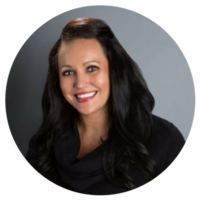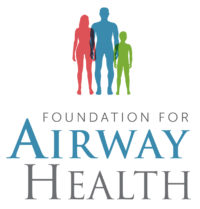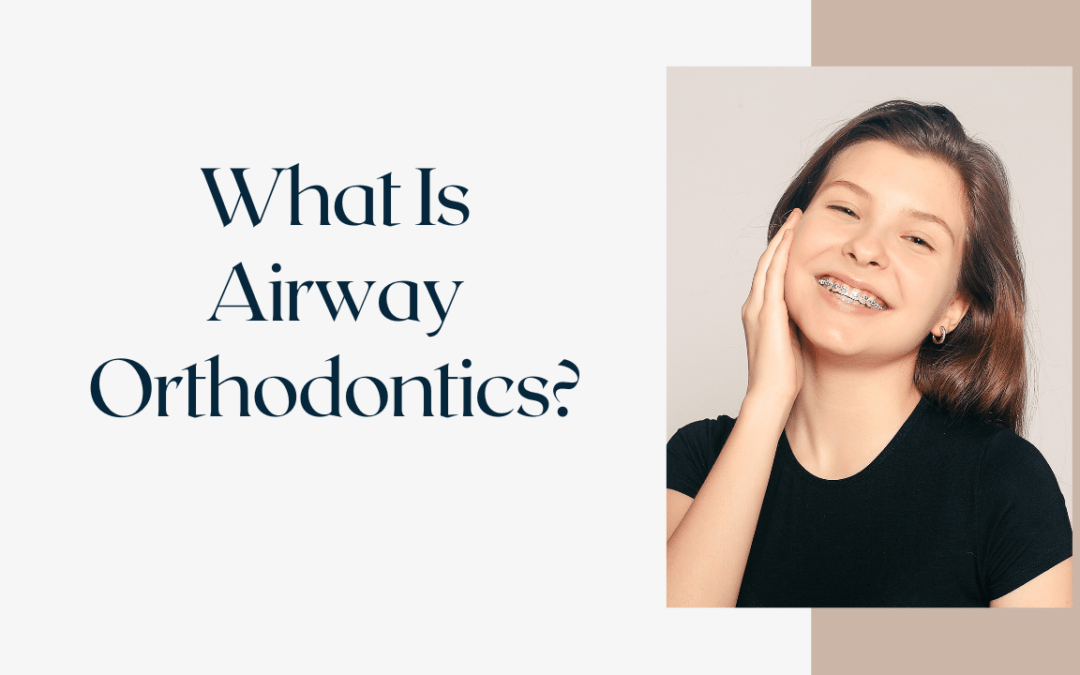What Is Airway Orthodontics?
Have you heard the scuttlebutt about “airway orthodontics” and wonder what is best for your child? Or perhaps you’re confused that a new fandangled way of straightening teeth has come about and now you have to spend hours researching what’s best for your child?
I can help save you some time. Airway orthodontics are the best option for your child.
You’re welcome. You just got back 5 hours of time!
Each year, I spend countless hours talking with parents about airway concerns and airway orthodontics in children. I do this because children don’t have a dog in the fight. They don’t have a voice, because they don’t know. And parents don’t know either. If the doctors or dentists don’t tell a parent there is a concern, they may never find out. That robs a child of greatness. It robs a child of optimized human performance. It may rob a child of great school memories because learning and good behavior become a struggle for children with airway centered disorders.
The problem with orthodontics is there is an old way and a new way of thinking, and not everyone is up to speed on the new way. Very often, when parents reach out to me, the information they have about their child’s myofunctional impairments and craniofacial development is inaccurate and incomplete.
Dr. Barry Raphael is an orthodontist in New Jersey who is making great strides in bringing together people who have very different ways of doing things but have common goals.
At the end of the day, we all agree that the airway is important, but there are many different philosophies involved in the process of getting to the end goal.
In this article, I will give you some basic yet very important information about airway orthodontics. I find that parents are often overwhelmed when I tell them I have a concern for their child’s airway and I’d like to refer them to an airway orthodontist. These types of orthodontists are not on every street corner and I encourage parents to be open to traveling to find the right person.
What Is Meant By the Term “Airway Orthodontics”?
Airway orthodontics is not a widely recognized term but it basically describes how an orthodontist practices or thinks. An airway focused orthodontist understands that cosmetically straightening teeth is not a healthy answer. Old school thinking believes that malocclusion (crowded, crooked teeth) is the problem and moving teeth is the answer. Airway orthodontists understand that when a child has a better airway, he or she will have a better life. These orthodontists understand that soft tissue dysfunction is the etiology of malocclusion and they look for better ways to address the root cause.
The problem is not really about the teeth. It is about the body seeking equilibrium. Malocclusion is the body’s solution to an imbalance.
Dr. Raphael believes “If your orthodontist is only seeking to straighten the teeth, then he or she is doing so in avoidance or ignorance of the real problem.”
Airway orthodontists have stopped worrying about the crooked teeth, and are now focused on what caused them to be crooked. Airway orthodontists believe that when you start seeing the problem as being something other than the teeth, then you start looking for very different solutions. One of the first goals will be how to get your child breathing through the nose. Another will be how to help your child get the tongue to the roof of the mouth. (Learn more about correct Oral Rest Posture in the Ultimate Guide to Orofacial Myofunctional Therapy.)
Dr. James Bieneman, one of my mentors, explains Airway Orthodontics as “a dental treatment that looks beyond surface dental care to address underlying health issues that may be affecting your health and impairing your breathing and sleep.”
“Airway Orthodontics is not just focused on improving the jawline, repairing crooked teeth and achieving the obvious aesthetic results; it uses non-surgical procedures to open up the airway and also helps to positively influence, improve, achieve, maintain and/or protect facial growth for children, especially at an early age, so that they can grow confident about their looks and live an optimally productive life.” (Dr. James Bieneman)
Why Is It All About the Airway?
Straight teeth are nice and all but the correct development of the airway means that a person gets adequate oxygen and isn’t deprived. This is news to many parents. When orofacial myofunctional disorders are present the facial structure can be altered. When the maxilla (the upper jaw) does not grow large enough forward and out, the rest of the face may suffer. Similar to a lid on a box, the mandible (lower jaw) will follow the shape of the maxilla. When the mandible grows sufficiently forward, it brings with it the tongue, soft tissues, and airway. So when the maxilla fails to grow adequately, the airway may be compromised.
The reason it’s “all about the airway” is that sufficient oxygenation is necessary for optimal health and development. Sleep concerns, bedwetting, behavioral problems, anxiety, depression, and digestive issues are just a few results of poor breathing.
Also, fun fact, obstructive sleep apnea is a craniofacial development issue.
How To Talk With Your Dentist About the Correct Orthodontist Referral
Educating yourself about the airway and airway orthodontics will help ease this conversation. Your dentist may not be one of those people operating with “the new way of thinking”. Your dentist might still be referring to the local orthodontist at age 12, just like he or she was taught in dental school. Somebody has to stand up for your child.
You want your child to grow properly, and having a critical eye for the health of your child is necessary. You have to be an activist and an advocate and not be afraid to have the hard conversations or go elsewhere for second and third opinions if necessary.
The first question you should be asking your dentist is how his or her dental practice is screening patients for sleep and breathing problems. The second question should be how is your dental practice identifying misguided craniofacial growth and is he or she able to refer you to someone who will address the root cause, not just fix the teeth?
Questions You Should Be Asking the Orthodontist
Again, this can be challenging, especially when you don’t know a lot about orthodontics, but the first three questions I would encourage you to ask are:
- Do you do retractive orthodontics?
- Do you extract teeth to fix crowding issues?
- Do you understand the concepts behind airway focused orthodontics and do you believe in the philosophy?
If the orthodontist routinely uses extraction or retraction to solve problems, then I would encourage you to move on to another orthodontist. You need someone to help your child grow properly, irrespective of the teeth. When you extract teeth from a small mouth, you get a smaller mouth. Dr. Raphael believes “when you pull teeth back into the face when the lower jaw is already retracted is antithetical to health”.
Airway Orthodontist Near Me
Thanks to continuing education efforts, and great organizations like the Breathe Institute and the AAPMD (American Academy of Physiological Medicine & Dentistry), airway orthodontists are becoming more common. We help our clients find the right provider for their needs, but for other’s it still requires some homework.
Below are some excellent choices for parents to use as resources when looking for an airway orthodontist. I encourage parents to start with these websites and then go from there. It is a “small world” as well, so it doesn’t hurt to contact one of these offices to see if they know anyone in your area. You would be surprised!
- Dr. Barry Raphael
- Dr. James Bieneman
- Dr. Tim Yu
- Dr. Derek Mahoney
- Dr. Duane Grummons
- Dr. Howard Hindin
- Dr. Mark Cruz
- Dr. Steve Carstensen
- Dr. Kevin Boyd
- Dr. Rebecca Bockow
Learn more by reading “Finding My Airway Orthodontic Team Near Me”.
Early Orthodontic Intervention and Myofunctional Therapy
During a comprehensive myofunctional exam, I make sure that parents understand why it is important to
- Plan early intervention
- Seek out the right professional (We aren’t looking for “tooth beauticians”.)
It is important that parents watch for misguided craniofacial growth and do something about it early. (Have you watched my lecture for parents called “Root Cause Resolution”? Grab your workshop information and workbook here.)
This may involve more than one opinion. If your child appears to have a crowding issue or a cross-bite, and your orthodontist does not want to do anything about it now, I recommend that you seek out a different provider. I encourage my clients to seek out an “orthotropic” or “airway focused” orthodontist. This type of orthodontist is more concerned about the correct structural alignment, airway, and craniofacial growth. This type of provider will focus on the airway, then the bones and lastly the straight teeth. This type of provider will also seek to start early, not waiting until the growth window has closed. I encourage parents to do some reading on the websites of my favorite mentors: Dr. Sandra Kahn, Dr. Mark Cruz, and Dr. Michael Gelb. (These doctors are extremely knowledgeable and will help you have that “ah-ha” moment, clearly understanding why early orthodontic intervention is a must.)
The facial development of a child is mostly complete by age 10-12. This means that waiting to see someone about concerns until later in life, means that you may not be able to take advantage of the natural growth process like you could at an earlier age. Once children have mixed dentition arch development becomes harder as the arch is no longer nice and pliable. The client is then moved into the “skeletal expansion” category where the work can be more involved and expensive.
When parents come to me with a 4 or 5-year-old, I stress that they want to be considering interceptive, early intervention much sooner rather than later, since the process is much slower and can take several years. I recommend my popular blog “Why Is Early Orthodontic Treatment Necessary For Children?”.
As a myofunctional therapist, I’m helping to correct tongue placement, mouth resting posture, tongue thrust swallowing pattern and poor breathing habits. Correcting myofunctional impairment will help in the successful orthodontic intervention.
Where Is Myofunctional Therapy Going To Fit In?
I’m going to help your child learn how to nasal breathe…so that he or she can keep the lips together…so that the tongue remains resting on the palate…so that he or she can swallow with the tongue and not the facial muscles.
Correcting the orofacial myofunctional disorders will be critical in the success of the orthodontic intervention.
What Steps You Should Take
The first step will be to have your child completely assessed. This will include the assessment of breathing, sleeping, chewing, swallowing, speaking, and posture. A myofunctional therapist will complete this assessment and will be the “hub of the wellness wheel.” Your child will need a comprehensive health team, and your myofunctional therapist will help you create this team.
The members of the comprehensive team may include:
- Myofunctional Therapist
- Sleep Specialist
- Breathing Educator
- Chiropractor
- Craniosacral Therapist
- Nutritionist
- Behavior Specialist
- Medical Support and Primary Care
- Allergist
- ENT
- Airway Orthodontist
Once your child has an assessment, a comprehensive plan can be created.
How To Get Started with Myofunctional Therapy
In our mission to serve everyone who wants and needs myofunctional therapy, we have several options for you to choose from. You’re the boss! We are along to support you on the path that you choose for yourself.
The best way to get started is to book your comprehensive exam so that we can learn about your needs and goals for therapy. Once the exam is completed, we can lay out a perfect step by step plan for you.
We work with clients in a variety of ways from total 1:1, to a hybrid mix, to digital lessons and memberships.


Meet Carmen Woodland
Carmen found this path of passion years ago as a dental hygienist.
Her story is personal and close to home. Her sweet granddaughter, Linzee, was passed back and forth amongst doctors and therapists for years trying to figure out her speech, breathing, sleep, chewing and swallowing issues. It wasn’t until Carmen completed post graduate training that she knew Linzee’s problem was a significant tongue-tie. Bingo.
Fast forward to now. Carmen is a crusader. An international wellness warrior. A voice for those who can’t find theirs, or who don’t have one.
She left clinical hygiene practice to start Impact Myofunctional Therapy. It has evolved from a way to make a living, into an obsession!
Carmen works with clients all over the world in her practice. Carmen and her team have transformed 1000’s of lives and been instrumental in catching hundreds of cases of undiagnosed sleep apnea.
In addition, she also
- Teaches other dental hygienists, speech therapists & dentists how to become myofunctional therapists through the Myofunctional Therapy Training Academy.
- Coaches dental offices on how to implement myofunctional screening into their daily practice
- Speaks in various settings
Carmen is also an airway provider for the Foundation of Airway Health, where she works diligently for the recognition, diagnosis, and treatment of airway-related disorders.
And last but not least, Carmen is a proud member of several professional associations that afford the opportunity to learn so that she can help you. Her professional memberships include:


